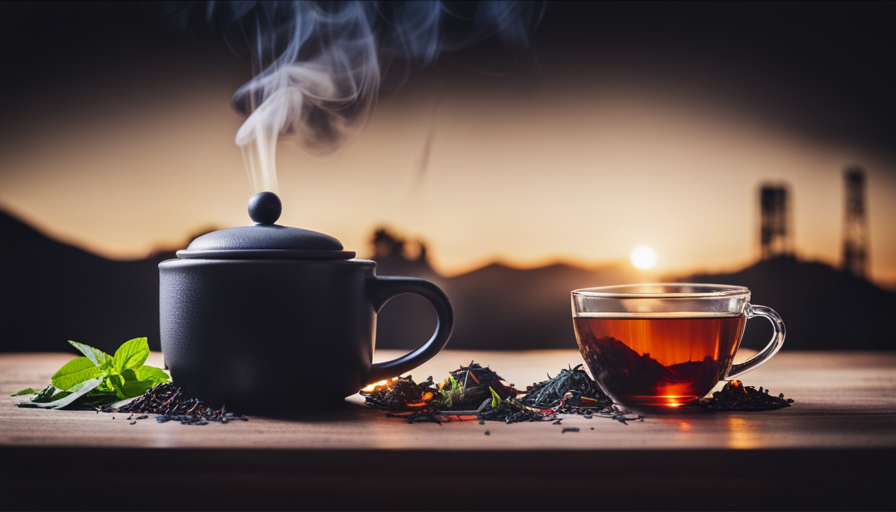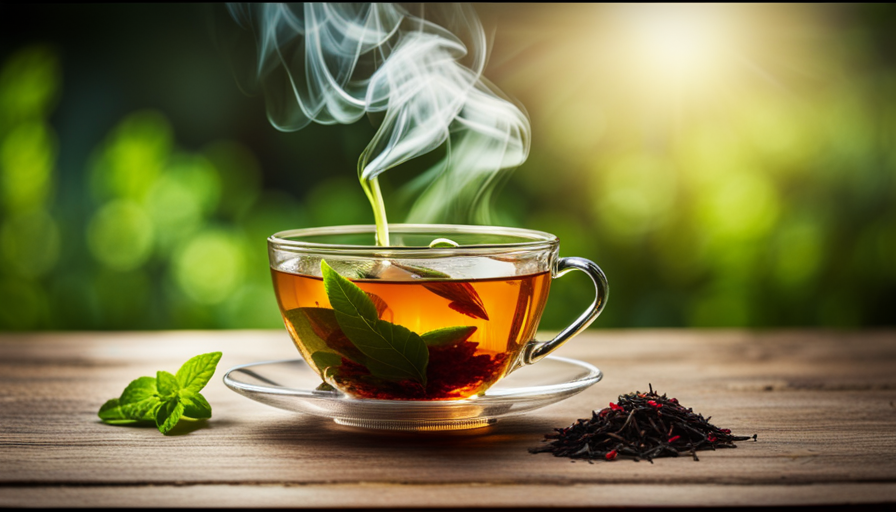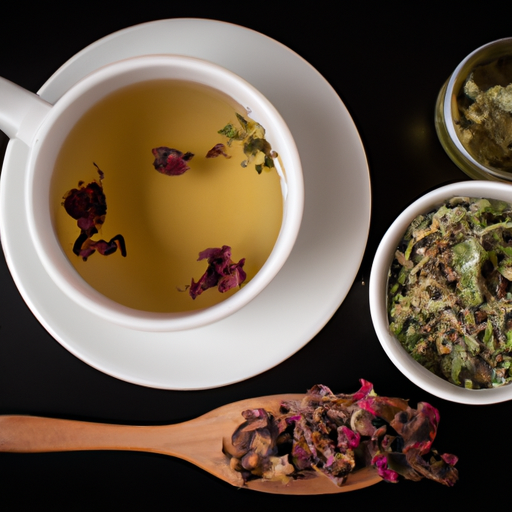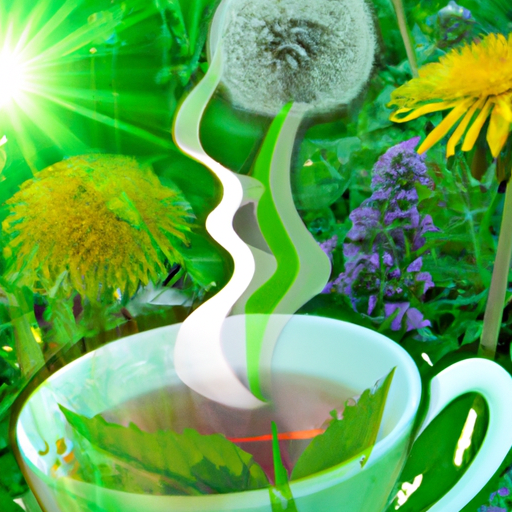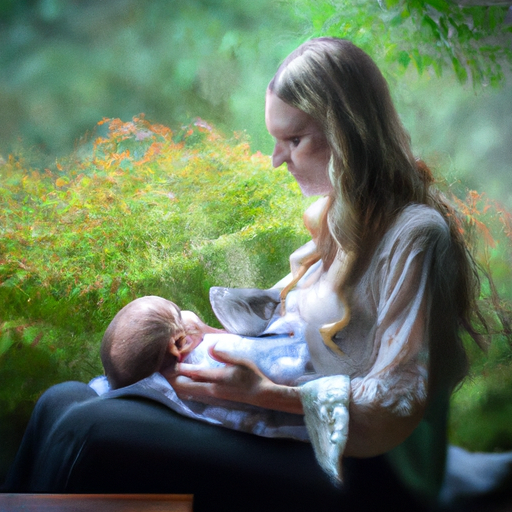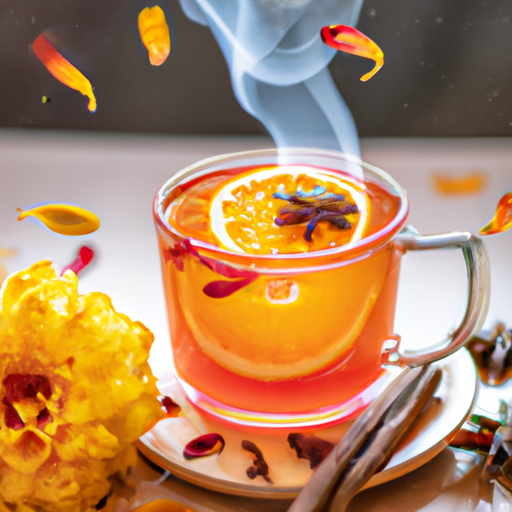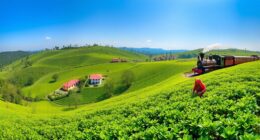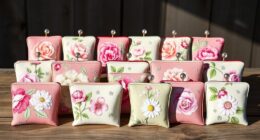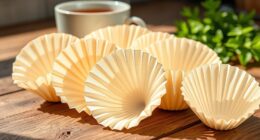Brewing herbal tea is akin to discovering a plethora of flavors and scents, enabling the herbs’ essence to blend into steaming water.
It’s a delicate dance between time, temperature, and technique. Just as a skilled conductor brings out the best in an orchestra, the art of steeping herbal tea requires finesse and precision.
As a tea enthusiast, I have spent countless hours experimenting with different herbs, steeping times, and ratios to achieve the perfect cup. In this article, I will guide you through the intricacies of steeping herbal tea, sharing my knowledge and expertise to help you brew a cup that is truly sublime.
From understanding the basics of steeping to choosing the right temperature, selecting the perfect tea infuser, and exploring different steeping methods, we will leave no leaf unturned.
I will also delve into adjusting steeping time for different herbs, experimenting with tea-to-water ratios, and avoiding the dreaded oversteeping.
So, grab your favorite herbal blend, join me on this journey, and let’s steep our way to tea bliss.
Key Takeaways
- Steeping herbal tea requires time, temperature, and technique.
- Steeping for 5-10 minutes maximizes flavor and benefits, while too short or too long can result in a weak or bitter cup.
- Different herbal teas require different steeping temperatures, with chamomile and peppermint best brewed at 180°F and robust teas withstanding higher temperatures.
- Adjusting steeping time, tea-to-water ratios, and adding citrus fruits or sweeteners can enhance flavor and customization.
Understanding the Basics of Steeping
Steeping herbal tea is like letting it take a relaxing spa day in hot water. Understanding the importance of proper steeping is crucial to unlocking the full benefits of herbal tea.
When you steep tea, you allow the water to extract the flavors, aroma, and therapeutic properties from the herbs. The length of time you steep herbal tea can greatly affect its taste and potency.
The benefits of proper steeping are numerous. By allowing the tea to steep for the recommended time, usually between 5 to 10 minutes, you ensure that the water has enough time to extract the desired compounds from the herbs. This maximizes the flavor and therapeutic benefits of the tea. Steeping for too short a time may result in a weak and bland cup, while steeping for too long can make the tea bitter and overpowering.
To transition into the subsequent section about choosing the right temperature, it is important to note that steeping time and temperature go hand in hand. The ideal temperature for steeping herbal tea is typically between 190°F and 212°F (88°C and 100°C). By finding the right balance between time and temperature, you can create a perfectly steeped cup of herbal tea that’s both flavorful and beneficial for your well-being.
Choosing the Right Temperature
When it comes to brewing your favorite herbal blend, it’s crucial to select the perfect temperature for maximum flavor extraction. The impact of water temperature can’t be underestimated, as it plays a significant role in the taste and aroma of your tea.
Different herbal teas require different water temperatures for optimal brewing, so it’s essential to know which temperature is best for your specific blend.
Generally, herbal teas are best brewed at temperatures between 200°F and 212°F (93°C to 100°C). However, some delicate herbal teas may require lower temperatures to prevent bitterness and preserve their delicate flavors. For example, chamomile and peppermint teas are best brewed at around 180°F (82°C) to maintain their soothing and refreshing qualities.
On the other hand, robust herbal teas like ginger or cinnamon blends can withstand higher temperatures. Brewing them between 200°F and 212°F (93°C to 100°C) allows for a fuller extraction of their bold and spicy flavors.
Choosing the right brew time is also important for herbal teas. Most herbal blends require steeping for about 5 to 7 minutes to fully infuse the water with their flavors and beneficial properties. However, it’s always a good idea to check the specific brewing instructions for your chosen herbal tea to ensure the best results.
Now that you know how to select the perfect water temperature and brew time for your herbal tea, let’s move on to the next step of selecting the perfect tea infuser.
Selecting the Perfect Tea Infuser
To truly unlock the essence of your herbal blend, finding the perfect tea infuser is like discovering the key to a hidden treasure chest of flavors. When it comes to brewing herbal tea, there are two main options to consider: using a teapot or an infuser. While a teapot allows for steeping larger quantities of tea at once, an infuser offers the advantage of individual portions.
Using loose leaf tea in an infuser allows the herbs to fully expand and release their aromatic oils, resulting in a more flavorful cup of tea. Conversely, tea bags can sometimes restrict the herbs and limit their ability to infuse properly.
Here are four reasons why selecting the perfect tea infuser is crucial to brewing the perfect cup of herbal tea:
- It allows the herbs to fully expand and release their flavors.
- It prevents any loose bits of herbs from floating in your cup.
- It makes it easy to control the strength of your brew.
- It offers convenience and portability.
Now that you have your tea infuser, the next step is adjusting the steeping time for different herbs.
Adjusting Steeping Time for Different Herbs
Once you have your perfect tea infuser, it’s time to dive into the art of extracting the rich essence of different herbs through their unique steeping times. Adjusting steeping techniques is crucial in order to fully enjoy the benefits of herbal tea. Each herb has its own optimal steeping time, which varies depending on the type of herb and your personal preference. To help you navigate this process, here is a table showcasing the recommended steeping times for some common herbs:
| Herb | Steeping Time |
|---|---|
| Chamomile | 5-7 minutes |
| Peppermint | 3-5 minutes |
| Lavender | 4-6 minutes |
| Ginger | 7-9 minutes |
| Rooibos | 4-6 minutes |
By adjusting the steeping time, you can control the strength and flavor profile of your herbal tea. Steeping for a shorter duration will result in a milder taste, while a longer steeping time will yield a stronger and more robust flavor. Experiment with different steeping times to discover your personal preference. In the next section, we will explore the fascinating world of experimenting with different tea-to-water ratios, allowing you to further customize your herbal tea experience.
Experimenting with Different Tea-to-Water Ratios
As you embark on your tea journey, get ready to dive into the world of tea-to-water ratios and unleash endless possibilities for customizing your herbal concoctions. Experimenting with different ratios can help you discover the optimal balance of flavors and strengths that suit your taste buds. Here are four key reasons why you should give it a try:
-
Bold and Strong: Increasing the tea-to-water ratio can result in a more intense and robust flavor. If you prefer a bolder taste, try using a higher amount of tea leaves for a smaller amount of water.
-
Delicate and Subtle: On the other hand, decreasing the tea-to-water ratio can produce a milder and more delicate flavor. This is ideal for herbs with a more subtle taste, allowing their unique characteristics to shine through.
-
Personalized Experience: By experimenting with different ratios, you can tailor your tea to suit your preferences. Whether you enjoy a strong kick or a gentle sip, finding your perfect ratio will enhance your tea-drinking experience.
-
Herbal Blend Exploration: Different herbs have varying strengths, so adjusting the tea-to-water ratio allows you to explore and appreciate each herb’s individual qualities.
By finding your optimal ratios, you can create a tea that’s perfectly suited to your taste buds.
Now, let’s explore how to enhance the flavor of your herbal tea with additions.
Enhancing Flavor with Additions
Ready to take your tea experience to the next level? Let’s explore how you can enhance the flavor of your herbal brew with some exciting additions!
One way to infuse your tea with a burst of flavor is by adding citrus fruits. Squeeze a slice of lemon, lime, or orange into your cup and watch as the zesty essence mingles with the herbal notes. Citrus not only adds a refreshing twist but also provides a natural source of vitamin C.
Another option to consider is sweetening your tea with honey or other sweeteners. Honey adds a touch of sweetness that complements the earthy flavors of herbal blends. You can also experiment with alternative sweeteners like agave syrup or stevia for a healthier option. Remember, a little goes a long way, so start with a small amount and adjust to your taste.
These additions can elevate your tea-drinking experience by adding depth and complexity to the flavors.
As we move on to the next section about avoiding oversteeping, keep in mind that timing is crucial in achieving the perfect cup of herbal tea.
Avoiding Oversteeping
To ensure you savor every sip of your cup, be mindful of the steeping time for your herbal infusion. Oversteeping can result in a bitter taste that may overpower the delicate flavors and aromas. Avoiding bitterness and achieving optimal flavor is key when steeping herbal tea. Here are four tips to help you avoid oversteeping and enjoy a perfectly balanced cup:
-
Follow the instructions: Different herbal teas have different steeping times. Read the packaging or consult a trusted source to determine the recommended steeping time for your specific tea. This will ensure you don’t go beyond the optimal steeping duration.
-
Use a timer: Set a timer to keep track of the steeping time. This will prevent you from getting distracted and accidentally oversteeping your tea. A few extra minutes can make a significant difference in taste.
-
Remove the tea bag or strainer: Once the recommended steeping time is up, promptly remove the tea bag or strainer from the hot water. Leaving it in for longer can result in an overly strong and bitter brew.
-
Taste as you go: If you’re unsure about the ideal steeping time, taste the tea periodically during the process. Start checking the flavor after a couple of minutes and continue until it reaches your desired taste.
By avoiding oversteeping, you can ensure a flavorful and enjoyable herbal tea experience. Properly storing your herbal tea is the next step in preserving its quality and freshness.
Properly Storing Your Herbal Tea
Ensure the longevity and freshness of your herbal tea by properly storing it. Proper brewing and storage are essential for preserving the flavor and aroma of your herbal blends.
To properly store your herbal tea, start by keeping it in an airtight container away from direct sunlight and moisture. This will help prevent the tea from absorbing any unwanted odors or flavors. Additionally, store your herbal tea in a cool, dark place, such as a pantry or cupboard, to maintain its quality.
When storing herbal tea, it’s also important to consider the shelf life. Generally, herbal teas can stay fresh for up to two years if stored properly. However, it’s important to note that some herbal blends may have a shorter shelf life, so it’s always a good idea to check the packaging for any specific recommendations.
By storing your herbal tea properly, you can ensure that it remains fresh and flavorful for longer periods. This will allow you to enjoy your favorite blends at their best.
Now, let’s explore different steeping methods to further enhance your tea-drinking experience.
Exploring Different Steeping Methods
One way to enhance your tea-drinking experience is by exploring different steeping methods, such as using a tea infuser or a French press. Did you know that using a tea infuser can help release more flavors and aromas from the tea leaves, resulting in a more enjoyable cup of tea?
When it comes to steeping herbal tea, it’s important to adjust the steeping time for delicate herbs. Delicate herbs like chamomile or lavender can quickly become bitter if steeped for too long. To avoid this, steep delicate herbs for only 3-5 minutes to ensure a light and refreshing flavor.
Another method worth exploring is cold steeping. Cold steeping involves steeping the tea leaves in cold water for several hours, allowing the flavors to slowly infuse. The result is a smooth and mellow brew that is perfect for hot summer days.
-
Cold steeping brings out the subtle flavors of the herbs, creating a refreshing and soothing cup of tea.
-
Adjusting the steeping time for delicate herbs ensures that their delicate flavors are preserved, resulting in a more enjoyable tea-drinking experience.
-
Exploring different steeping methods adds variety to your tea routine, allowing you to discover new flavors and aromas.
Now that you know some different steeping methods, let’s dive into the next section and enjoy the fruits of your steeping labor, discovering the perfect cup of herbal tea.
Enjoying the Fruits of Your Steeping Labor
After exploring different steeping methods, I’ve come to realize that enjoying the fruits of your steeping labor is truly a delightful experience.
When it comes to herbal tea, the key to maximizing flavor lies in finding the perfect steeping time.
Herbal teas are known for their wide range of flavors, from soothing chamomile to invigorating peppermint. Steeping these teas for too long can result in a bitter taste, while steeping them for too short a time may leave you wanting more flavor. It’s all about finding that sweet spot.
By steeping your herbal tea for the recommended amount of time, you can ensure that you extract the optimal flavor from the herbs and botanicals. This allows you to fully enjoy the rich and aromatic qualities that herbal tea has to offer.
In addition to the delightful taste, herbal tea also provides numerous health benefits. Depending on the herbs used, these teas can aid in digestion, promote relaxation, boost the immune system, and even provide relief from common ailments like colds and headaches.
So, the next time you steep a cup of herbal tea, remember to follow the recommended steeping time to maximize the flavor and reap the benefits of this soothing beverage.
Frequently Asked Questions
Can I reuse the leaves from my herbal tea for a second steep?
Yes, you can definitely reuse the leaves from your herbal tea for a second steep. To get the most out of your tea leaves, it’s important to use proper steeping techniques.
After the first steep, remove the leaves and let them air dry. When you’re ready for a second cup, simply steep the leaves again, using the same water temperature and steeping time as before. This will ensure a flavorful and enjoyable cup of tea.
How do I know if I’ve oversteeped my herbal tea?
When it comes to herbal tea, oversteeping can ruin the delicate flavors. Think of it like cooking pasta – you want it al dente, not mushy. Similarly, oversteeping herbal tea can lead to a bitter, overpowering taste.
To prevent this, look out for signs like a strong, bitter aroma or a darker color. To avoid oversteeping, follow the recommended steeping time for your specific herbal tea and remove the tea leaves promptly.
Can I mix different types of herbal tea together when steeping?
Yes, you can mix different flavors of herbal tea together when steeping. It’s a great way to create unique blends and experiment with different taste combinations. Combining herbal teas can also offer a variety of health benefits, as each herb has its own unique properties.
For example, mixing chamomile and lavender can promote relaxation and better sleep. Just make sure to adjust the steeping time and water temperature accordingly for the different herbs you’re using.
Can I steep herbal tea in cold water instead of hot water?
Yes, you can steep herbal tea in cold water instead of hot water. Cold water steeping, also known as cold brewed tea, offers several benefits. It results in a smoother, less bitter taste as the flavors are extracted more slowly. Additionally, cold brewed tea contains less caffeine and is gentler on the stomach.
To make cold brewed herbal tea, simply place the tea leaves or tea bags in a container of cold water and let it steep in the refrigerator for several hours or overnight.
Is it necessary to strain my herbal tea after steeping, or can I leave the leaves in the cup?
After steeping your herbal tea, it’s like a delicate dance of flavors. As a tea connoisseur, I can tell you that it’s not necessary to strain the leaves. In fact, leaving them in the cup allows for reusing the tea leaves and extracting even more goodness.
However, if you prefer a smoother sip, you can strain the tea. It all depends on your personal preference and the steeping techniques you enjoy.
Conclusion
In conclusion, steeping herbal tea is like nurturing a delicate flower. Just as each herb requires its own time and care to bloom, so too does each tea need its own steeping time to release its full potential.
By choosing the right temperature, infuser, and steeping method, we can unlock a world of flavors and health benefits. So let’s take a moment to appreciate the art of steeping, for it’s through this process that we truly connect with nature’s healing power.
Let’s savor each sip and nourish our souls.

